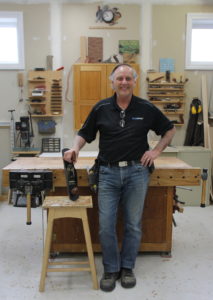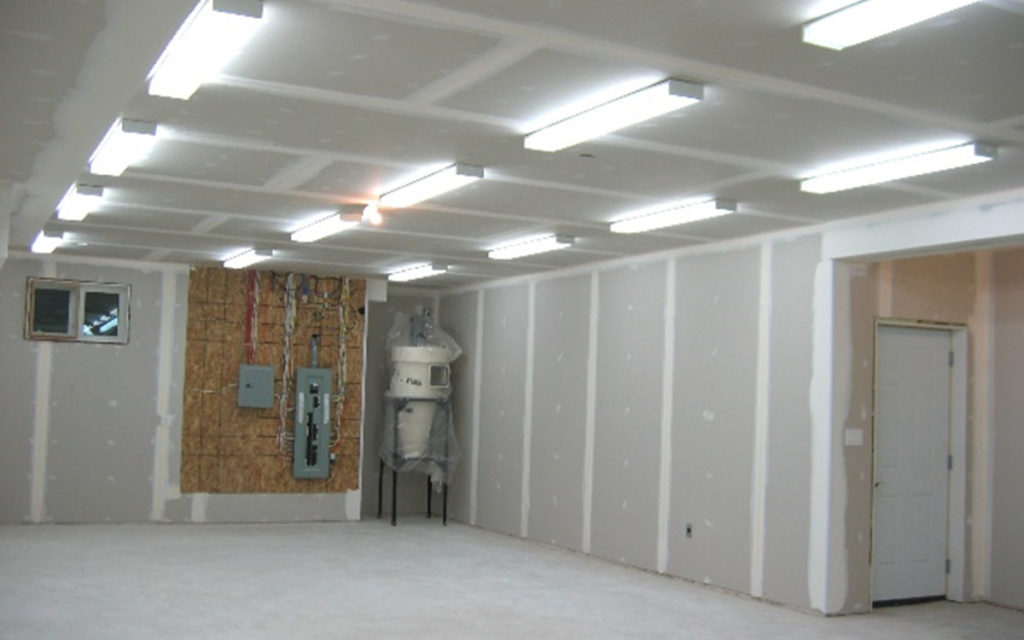Let’s face it, working in a poorly lit shop isn’t much fun. And more importantly, unless you can clearly see what you’re working on – and this is critical to finishing – your chances of consistently producing pro-grade work will be diminished.
But it doesn’t need to be this way. Given the technology available to us today in the form of LED lighting systems, exceptional LED woodshop lighting is available at increasingly attractive prices.
In part 1 of this two-part article, I’ll explain what LED lighting is all about and how to take best advantage of it for your particular shop situation.
WHAT IS LED LIGHTING AND WHY IS IT SO ATTRACTIVE?
LED stands for Light Emitting Diode and this type of lighting system has a lot of things going for it:
- It produces more light with far less heat than either incandescent or fluorescent lights
- It offers better color accuracy without the annoying flickering of fluorescent lights
- It can lower your energy bill, with saving of 60% – 70% often cited
- LEDs can last 5 to 10 times longer than fluorescent lights
- LEDs do not contain mercury and are therefore safer and more environmentally friendly than fluorescent
- Retrofit kits are available for inexpensively converting fluorescent lighting systems to LED (more on this below)
On the downside, LED lighting can be more expensive to buy than the others…but not in all situations and not by as much as you may think.
And if the price-dropping trend we’ve seen over the past five years continues, LEDs should soon be on par with — or maybe even below — the price of fluorescent lighting systems, especially if you calculate long-term costs.
HOW TO CONVERT TO LED WOODSHOP LIGHTING
Upgrading your lighting to LEDs (or starting from scratch) is an investment decision not to be taken lightly, but the actual process isn’t too complicated.
First, LED lights are available in all the traditional forms and fixtures we’re used to seeing in our shops: ceiling-mounted 4’ and 8’ tubes, pot lights and task lighting.
Second, many of the non-LED fixtures you already have in your shop may be retrofitted to accept LEDs, so you’ll want to see if that’s a more cost-effective and simpler solution for you.
It was for me when I elected to upgrade my shop’s general lighting from T8 fluorescent lights to LEDs.
Back when I first set up my shop over 10 years ago, LED lighting was just coming onto the scene, and because it was considerably more expensive than T8 fluorescent lighting systems, I went with the cheaper fluorescent option.
But as time went on and I kept having to replace the 4’ tubes and ballast modules, I realized I wasn’t saving any money in the long run.
So, I did my homework and determined that retrofitting my existing 4’ double-tube fluorescent lights with LEDs – as well as painting the walls and ceilings white — would be the best approach.
To help with my budget, I retrofitted in two phases.
In the first phase, I converted three areas: my workbench, finishing prep and spray booth. I did the rest of the shop the following year.
The difference in lighting quality was quite significant and well worth the investment.
Speaking of which, your shop (pro or consumer) may qualify for one of the many government grants and programs aimed at reducing environmental impact and the electrical demand on the power grid through lighting upgrades.
In the USA, a good place to start is the Database of State Incentives for Renewables & Efficiency.
In Canada, try the Directory of Energy Efficiency and Alternative Energy Programs.
LED WOODSHOP LIGHTING CONSULTANTS
If you are planning a major upgrade to your commercial shop, or if your situation simply requires it, you may wish to seek the services of a lighting consultant.
These experts can help determine exactly what is required for your unique situation — often with the aid of computer-based renderings — and in some cases can even arrange to have the work undertaken by qualified tradespersons.
AUGMENTED GENERAL SHOP LIGHTING AND TASK LIGHTING
So far, I’ve been talking mostly about general shop lighting, but there are some areas where additional light is warranted.
This will usually be provided in the form of additional overhead lighting (10% – 25% more “lumens,” which I’ll explain, along with CRI, in my next post)…
Or task lighting, with lights on stands or magnetic bases that mount to the machines…
Or both.
Here are a few examples:
• Machining. Wherever detailed work is being done, enhanced lighting can make a considerable difference. And if you’re like me, with each passing year it seems I need even more light to work efficiently!
• Joinery and Assembly. Cutting and fine-fitting joints is fussy work, so don’t skimp on lighting in these areas.
• Finish Prep. This area calls for a more specific style of task lighting: horizontally oriented lights which highlight problem areas requiring more attention. If you can’t see it, you can’t correct it!
• Finishing. If there’s one area where quality and color of your lighting is important, it’s your finishing area, and that’s why “Part 2” of this article is dedicated to understanding CRI, lumens, etc.
I’ll cover those terms and other terminology and calculations you should know for lighting your workspace with LEDs.
Until then, I hope this was helpful and I’d love to hear any questions, comments or experiences you’ve had with lighting, LED or otherwise.
Please share your thoughts or read what others are saying in the comments section below.
— Marty Schlosser




Good article and thank you. I switched my shop to LED and couldn’t be happier. Big box have bulbs that don’t need any rewiring at all, just plug and play which is what I used and you can also adjust the color temp of the lights which was a plus.
Fabulous..such good service.” Thank you… I have never had such good service.